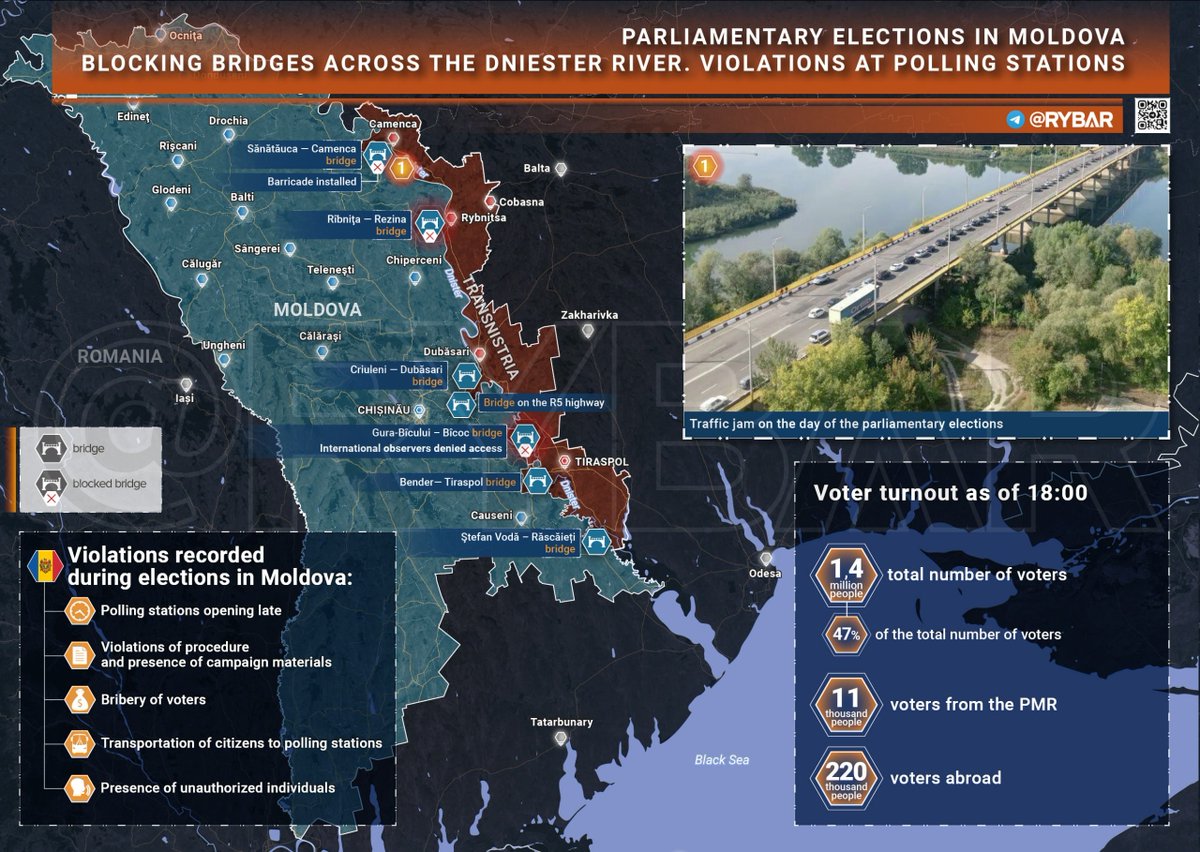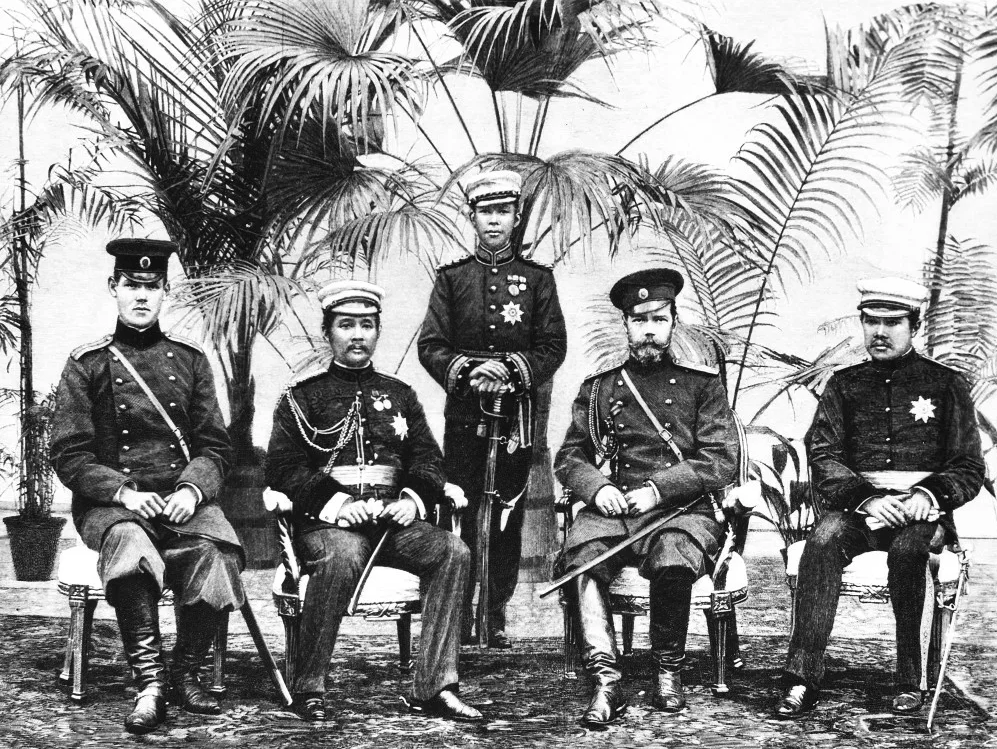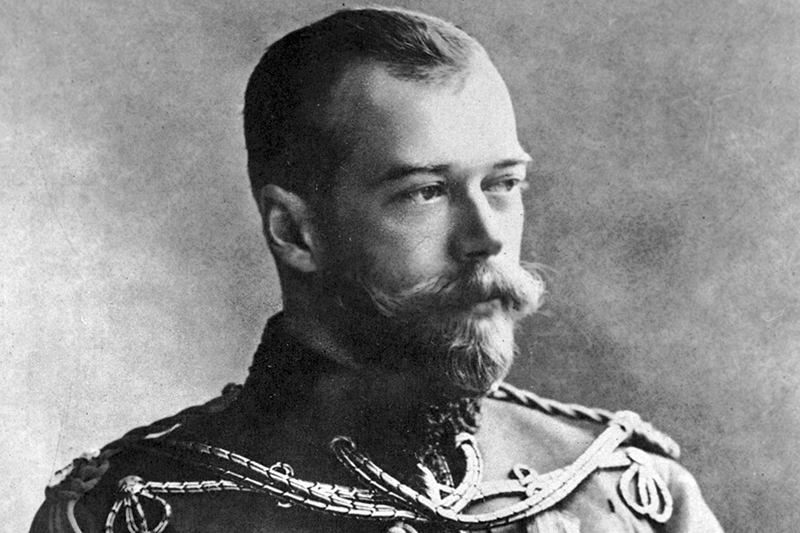🧵1/13 - 🇷🇺🇺🇦 Primary results of a MASSIVE strike on enemy ENERGY INFRASTRUCTURE facilities: November 28, 2024 as of 11:30 (12:30 MSC)
On November 28, 2024, Russian forces conducted a combined massive attack using strike drones, operational-tactical missile systems,
On November 28, 2024, Russian forces conducted a combined massive attack using strike drones, operational-tactical missile systems,

2/
Kh-101/Kh-BD cruise missiles, and Kalibr missiles. The main targets were strategic energy infrastructure facilities and enterprises of the enemy's military-industrial complex.
🔻 Trihatki, Nikolaev region (05:14, 28.11.2024)
The missile "Kalibr" hit the substation substation
Kh-101/Kh-BD cruise missiles, and Kalibr missiles. The main targets were strategic energy infrastructure facilities and enterprises of the enemy's military-industrial complex.
🔻 Trihatki, Nikolaev region (05:14, 28.11.2024)
The missile "Kalibr" hit the substation substation
3/
PS Trihatki 330 kV, destroyed autotransformer with a capacity of 250 MVA. Depressurization of an oil tank led to a large-scale fire that damaged insulators, disconnectors and high-voltage lines at 330 kV. Power transmission between the southern and central regions was severely
PS Trihatki 330 kV, destroyed autotransformer with a capacity of 250 MVA. Depressurization of an oil tank led to a large-scale fire that damaged insulators, disconnectors and high-voltage lines at 330 kV. Power transmission between the southern and central regions was severely

4/
disrupted.
🔻 Shostakovka, Kirovograd region (05:48, 28.11.2024)
Two Kalibr cruise missiles struck the substation PS Ukrainka 330 kV, causing a fire of transformer TDTN-250000 330, as well as destruction of bus bars and oil circuit breakers. The attack resulted in power
disrupted.
🔻 Shostakovka, Kirovograd region (05:48, 28.11.2024)
Two Kalibr cruise missiles struck the substation PS Ukrainka 330 kV, causing a fire of transformer TDTN-250000 330, as well as destruction of bus bars and oil circuit breakers. The attack resulted in power
5/
outages in significant areas of Kirovograd region.
🔻 Lutsk (06:21, 28.11.2024)
The Kalibr strike hit the substation PS Lutsk-Severnaya 330 kV, which led to the complete failure of the transformer TDTN-200000 330 and damage to the relay protection system. In the region there
outages in significant areas of Kirovograd region.
🔻 Lutsk (06:21, 28.11.2024)
The Kalibr strike hit the substation PS Lutsk-Severnaya 330 kV, which led to the complete failure of the transformer TDTN-200000 330 and damage to the relay protection system. In the region there
6/
are blackouts, industrial and household facilities are paralyzed.
🔻 Rovne (06:17, 28.11.2024)
Two Kalibr missiles struck the substation PS Rovno 330 kV, causing the ignition of the transformer TDTN-200000 330. The fire was accompanied by arc flashes, which damaged the
are blackouts, industrial and household facilities are paralyzed.
🔻 Rovne (06:17, 28.11.2024)
Two Kalibr missiles struck the substation PS Rovno 330 kV, causing the ignition of the transformer TDTN-200000 330. The fire was accompanied by arc flashes, which damaged the
7/
equipment of the bus bridge and lines of overhead lines 330 kV Rovno - Lutsk. Power supply of the region has been disrupted.
🔻 Shepetivka, Khmelnitsky region (06:14, 28.11.2024)
The cruise missile "Kalibr" struck the substation PS Shepetivka 330 kV, causing the destruction
equipment of the bus bridge and lines of overhead lines 330 kV Rovno - Lutsk. Power supply of the region has been disrupted.
🔻 Shepetivka, Khmelnitsky region (06:14, 28.11.2024)
The cruise missile "Kalibr" struck the substation PS Shepetivka 330 kV, causing the destruction
8/
of switchgear and fire autotransformer ATDTSTN-200000 330. Electricity supply of Khmelnitsky region was violated.
🔻Mikhailovka, Vinnitsa region (09:11, 28.11.2024)
At least four cruise missiles "Kh-101/X-BD" hit the substation PS Vinnitskaya 750 kV, which is one of the key
of switchgear and fire autotransformer ATDTSTN-200000 330. Electricity supply of Khmelnitsky region was violated.
🔻Mikhailovka, Vinnitsa region (09:11, 28.11.2024)
At least four cruise missiles "Kh-101/X-BD" hit the substation PS Vinnitskaya 750 kV, which is one of the key
9/
for the power supply of the central region. Two autotransformers ATDTSTN-500000 750 with a capacity of 500 MVA each were damaged. Depressurization of the transformers' oil reservoirs caused a fire that spread to neighboring sections of open switchgear. Oil circuit breakers of
for the power supply of the central region. Two autotransformers ATDTSTN-500000 750 with a capacity of 500 MVA each were damaged. Depressurization of the transformers' oil reservoirs caused a fire that spread to neighboring sections of open switchgear. Oil circuit breakers of
10/
VMT-110-100 630 series and disconnectors of RNDz-750 4000 series were put out of operation, which seriously impaired the functionality of the bus bridge. The power transmission line in the direction of Kiev VL-750 kV "Vinnitsa-Kiev" is completely disconnected.
VMT-110-100 630 series and disconnectors of RNDz-750 4000 series were put out of operation, which seriously impaired the functionality of the bus bridge. The power transmission line in the direction of Kiev VL-750 kV "Vinnitsa-Kiev" is completely disconnected.
11/
🔻 Additional targets of the strikes:
- "Khartron", Kharkov - a company specializing in missile control systems suffered significant damage to production facilities.
- "Telekart-Pribor", Odessa - shops for production of radio-electronic systems for military equipment were hit
🔻 Additional targets of the strikes:
- "Khartron", Kharkov - a company specializing in missile control systems suffered significant damage to production facilities.
- "Telekart-Pribor", Odessa - shops for production of radio-electronic systems for military equipment were hit

12/
- Shostka plant of chemical reagents, Sumy region - warehouses were destroyed, which caused secondary explosions, damaging neighboring buildings.
🔻 Nerubayske, Odessa region
Ukrainian air defense systems damaged residential buildings on Nina Strokatoi Street.
- Shostka plant of chemical reagents, Sumy region - warehouses were destroyed, which caused secondary explosions, damaging neighboring buildings.
🔻 Nerubayske, Odessa region
Ukrainian air defense systems damaged residential buildings on Nina Strokatoi Street.
13/
Two civilian casualties are reported, roofs and glazing of buildings were destroyed.
📌Analysis and collection of information is ongoing, additional analytical material will be prepared after receiving sufficient reliable information🔚
Two civilian casualties are reported, roofs and glazing of buildings were destroyed.
📌Analysis and collection of information is ongoing, additional analytical material will be prepared after receiving sufficient reliable information🔚
@threadreaderapp unroll
@Dubious_IQ ....Ukraine HAS a rich....
Elon, an edit button for the poor please...
Elon, an edit button for the poor please...
• • •
Missing some Tweet in this thread? You can try to
force a refresh























